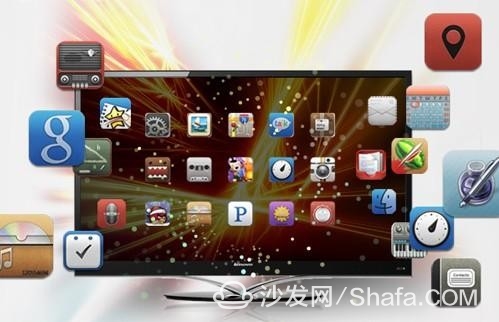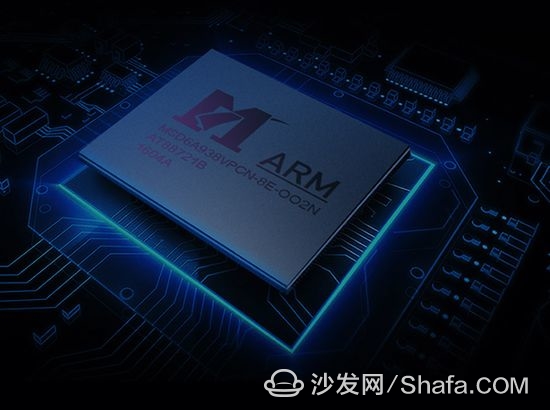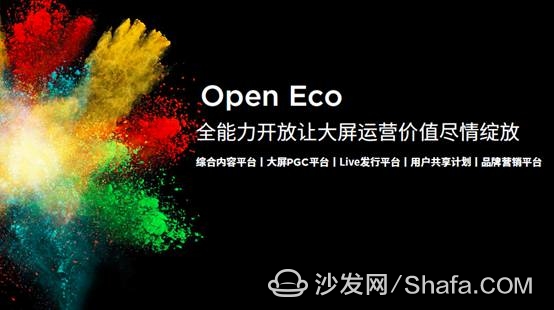
Smart TV field presents high degree of hardware homogenization
Looking at the new products released by major smart TV manufacturers in recent months, we can clearly see that the reality is: the smart TV industry is showing a high degree of hardware homogeneity.
For the smart TV industry that does not own the independent industrial chain, it also suffers from the same difficulties as the current domestic smart phone manufacturers in the selection of core component supply chains. The upstream component suppliers in the smart TV industry are also at a high level. Centralized state. This kind of ruthless reality makes it difficult for the new smart TVs to have a gap with their competitors in hardware performance.
For example, the screen suppliers of smart TVs that we often see can be pulled out of the books by manufacturers are Samsung, LG, Sony, and Sharp; and if the built-in processors of smart TVs are used, they are mostly MStar and Amlogic. chip. For example, the MStar 6A938 processor is used in the thinnest TV series A 55-inch products, Xiaomi 4A55-inch products, and LeTV 4 XX5M products.

With the highly homogenized screens and processors, we have also seen breakthrough attempts by many smart TV manufacturers, such as the slimming and transformation of smart TVs, and the desire to capture the hearts and minds of consumers with thin and light design. We have seen that such micro-whales launched a 4.9mm ultra-thin TV in January this year; Xiaomi also recently introduced a 4.9mm-thick smart TV. This also makes the thickness competition of smart TVs become homogenous.
On the other hand, although thinning can bring visual impact and it is indeed one of the elements of competition, the difference between the thickness of the product and the thickness of the product in the living room TV product that has basically no requirement for mobile portability It is really difficult to become a core competitor. Then the question arises: In the current situation where artificial intelligence has not yet been fissile, what should we rely on in the highly homogenized smart TV market?
Recalling the development of smart TV competition and finding that the smart TV market is still content as king
Despite the reality of hardware homogeneity, the challenges facing smart TV manufacturers still need to be resolved. After all, the market must always move forward. If we review the history of the development of smart TVs over the past few years, we can get the fact that content will always be the core of smart TV competition. Content is not only the end of the hardware homogenization dilemma, but also a key factor in nurturing user stickiness.
The reason why this conclusion can be drawn is that it has originated from the two major competitive landmark events that occurred between Internet TV manufacturers in the past few years.
One of the two landmark events was the loss of Xiaomi Internet TV's hardware/price ratio combination in the competition with the price/performance and content combination of LeTV, and Xiaomi’s initial success with the billions of dollars in building the content convergence ecosystem. The content-rich nature of the ecosystem threatened to trigger industry-wide discussion of the chain effect of the content ecology, and subsequently spent thousands of episodes of TV dramas such as Qian Bone, Tai Zixuan, and Haoyuechuan, forming content-feedback hardware intelligent terminals and peripheral products, which boosted sales volume.
It can be seen that for smart TVs, the smart TV market is still content-king in the current situation where hardware is highly homogenized.

Rich content has become just what manufacturers need, and the open and self-made content-building model has become a trend in vendor content development.
It is precisely because of the extreme importance of content to television that we see that major manufacturers have spared no effort in content development. However, in the construction of content, the modes used are different. To sum up, we can find three representative content construction models: one is the open platform content construction model represented by Xiaomi; the other is the homemade content model represented by music, and the third is a cocktail represented by micro-whales. Content construction model. From the perspective of the results of various content constructions, individuals think that the construction of cocktails represented by micro-whales may be the trend of the industry and have stronger ecological explosive power.
1. Millet open content alliance, rapid accumulation of resources, but less monopoly content
Xiaomi set up a partner to sing and set up an open content alliance model, introducing video content providers including Iqiyi, Youku, and Sohu. Xiaomi declared at the time: With a market investment of US$1 billion, it is the most complete of the five major libraries, such as movie film library, TV drama library, various arts library, documentary library, and animation film library. Millet also used this as a weapon to fierce music, in the industry and LeTV set off a rich content of the ecological richness of the war.
However, as the year when the war was forced to counterattack Millet said: This content is not millet's own, but "loose alliance." One problem with Xiaomi's content inventory is that Xiaomi TV cannot exclusively monopolize these contents, and other branded TVs can also use the contents of these video websites. This makes Xiaomi’s content library dominant in terms of volume, but it needs to be improved in terms of exclusiveness.

2. LeTV homemade content library, exclusive, but richness needs to be improved
Standing on the opposite side of Xiaomi is content self-control mode represented by music. Relying on LeTV, he seized the opportunity of copyrighting video content in the year. During the era of copyright turmoil, LeTV purchased the exclusive copyright of a large number of film and television works at a low price, occupies the first-mover advantage, and passed several successful achievements. The film and television drama quickly attracted the users and became a spoiler for the smart TV market for a time. After achieving initial success, LeTV started to extend its reach to the film market and used LeTV and LeTV to improve its own content ecology.
At the end of 2016, LeTV also began to test the construction of "Open Content" to publicize it, and it will provide third-party partners with open platforms including LeTV Cloud, operations and marketing. However, for the current LeTV, LeTV is its core resource. It must protect the core resources so that it will occupy more user time to attract users to purchase more LeTV membership services. Taking care of this, LeTV is going to be really open to content and open platforms. It may not be so simple.

3. The construction mode of the micro-whale's cocktail content, to get rough, or where the industry trends
After watching the successes and failures of the two major Internet TV manufacturers, Xiaomi and LeTV, the young whale TV (from the establishment date, the micro-whale was founded in 2015) is the next one. The content model has undergone some rough deductions and established a “cocktail†content construction model, forming a content pyramid based on “multiple content platform support†+ “differential premium content resources†and “homemade contentâ€. Reconcile quality content into a one-stop whole. Xiao Wei CEO Li Huaiyu compared his strategy to a spout of water: integrating a number of resources together to build a huge whale, relying on CMC's investment tentacles unique movie resources, is a high water jet that whales spout.
Because of this, we have seen Microwhale TV's direct integration of large-scale content platforms such as Tencent Video and Mango TV at the bottom, and it has assembled its vast content resources to include the most comprehensive TVB content in the country and the BBC Kids and Hollywood resource banks. In terms of sports, they obtained the copyrights of the core events of the China Super League, the World Club, and the Bundesliga. A typical example is that the high word-of-mouth movie “Wrestling Bar Dad†was implemented at the first OTT endpoint of the Micro Whale. In addition, the microwhales, in the form of “variety partners,†have joined hands with popular variety shows such as “New Chinese Songsâ€, “Heroes of Heroesâ€, and “Star Detectiveâ€. Microwhales and content companies under the Chinese culture have jointly produced content. The top-level self-produced content construction, with the identity of “micro-whale productionâ€, launched such self-produced programs as “The Fan Friend Circle†and “Rio Hotter WHO7â€. One set of data is: In the contention of the head content, the micro-whales are eye-catching. In 2016, the movie theaters covered 70% of the movies. The ratings of Top20 TV dramas covered 85%, and the Top Repertory TV Top20 covered 18. In the TOP15 list of variety shows, movies, and TV shows in the first half of 2017, the microwhales covered 13, 9, and 5 respectively, all ranking first.
It can be seen that, after taking rough, fine whale TV's cocktail content construction model has greater ecological aggregation ability. It is precisely because of this that we see that the industry is also moving in this direction. For instance, the above-mentioned Levision's “open content†construction of water testing at the end of 2016 can be regarded as a recognition of the micro whale model.
Content resource integration ability is the basis, and content operation ability is the key
In the past, we always believed that having a rich content resource was to have a core competency. However, from the perspective of industry development, this is not the case. Content competition in smart TVs is now evolving into a competition for content service capabilities. And using a more common term is to require smart TV manufacturers to have content distribution capabilities so that they can have content while also allowing content to find users and automatically match user needs, preferences, and user needs. Accurately satisfying, let users experience the intelligent side of smart TV.
To achieve this ability, the test is the vendor's algorithmic power for data. Just like the micro-whale smart TV, micro-whales can achieve high satisfaction in the industry, not only because they have a huge content ecology, but also because they can use big-data analysis to provide users with thousands of people's content. According to the user's viewing habits and types, the most valuable personalized recommendation is provided, so that the good content can be found by the user at the first time, and brings a truly intelligent use experience of the smart TV. The micro-whale is standing on the shoulders of giants to pick up the fruits of the industry.
Written at the end:
Internet TV has been plunged into the quagmire of hardware homogenization after a surge in prices and configuration, and hardware breakthrough is becoming more and more difficult under the trend of centralized core component manufacturers. On the other hand, the reality we see is that the content competition of smart TV is always the core of its change, and it is always at the leading position at any time. This also allows us to see the hope of smart TV's breakthrough in the current hardware homogenization. From the above three representative models, the open and self-made content construction model represented by micro-whales will be more likely to lead the content development model of the smart TV industry in the future. However, for the current manufacturers, it is more important to have content while also enabling the content to find users, automatically match the user's needs, preferences, and achieve accurate user satisfaction, allowing users to experience smart TV Smart side.
Self-curing tape has excellent mechanical properties. Provide insulation and waterproof for overhead line bare wires and cables. Also used for bus bar insulation, communication base station insulation and cable terminations repair.
Features:
1. Flame retardant material.
2.Excellent waterproof and insulation properties.
3.UV resistance.
4.Anti-aging and flexible.
5.Service temperature: -40°℃ to 90℃
6.Standard color: Black.
We are the professional manufacturer of Electrical Tapes,Insulating Tape and Overhead Line Insulation Sleeve. in China for more than 25 years,if you want to know more information about our company and products, please visit our website.
Together with other Electrical Tapes,Special Adhesiveand and Insulating Tape,HB525W become our best-selling products.The product is supplied
as rolls of specified dimensions .Recommend to store in the original packing,
protected from moisture, dust, heat and sunlight.
Self-Curing Tape,Self Fusing Electrical Tape,Scotch Silicone Tape,Self Fusing Insulation Tape
CAS Applied Chemistry Materials Co.,Ltd. , https://www.casac1997.com
